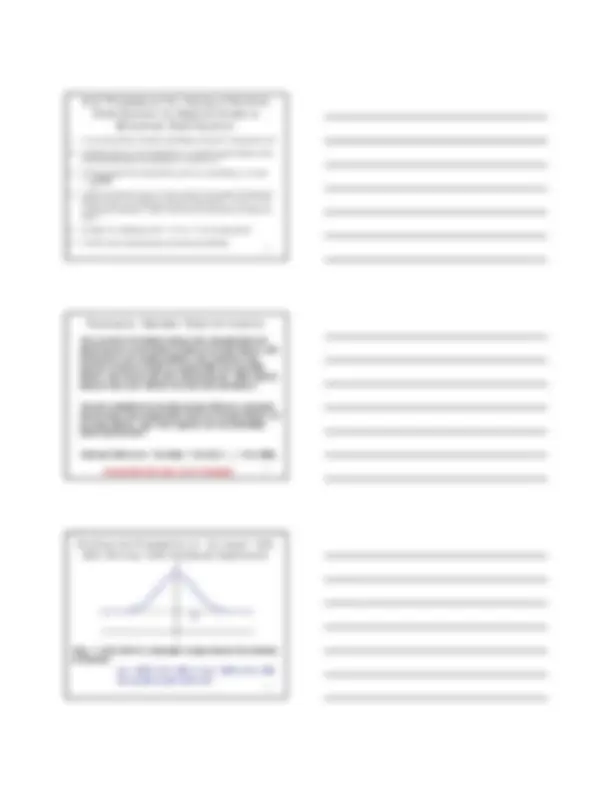





Study with the several resources on Docsity

Earn points by helping other students or get them with a premium plan


Prepare for your exams
Study with the several resources on Docsity

Earn points to download
Earn points by helping other students or get them with a premium plan
Community
Ask the community for help and clear up your study doubts
Discover the best universities in your country according to Docsity users
Free resources
Download our free guides on studying techniques, anxiety management strategies, and thesis advice from Docsity tutors
The central limit theorem, which states that as the sample size increases, the distribution of sample means approaches a normal distribution, regardless of the distribution of the original data. It covers practical rules for applying the theorem, examples, and the use of normal distribution to approximate binomial distribution. The document also includes an example of finding probabilities with a normally distributed population.
Typology: Study notes
1 / 5

This page cannot be seen from the preview
Don't miss anything!




1
Today: Sections 6-5/6-6; Homework #2 Due
Assignment: 6-5 {1, 3, 5, 7, 11, 15, 19} 6-6 {1, 3, 5, 7, 15, 17, 19, 23, 25} Next: Test #
Instructor: John Burke
E-mail: john_burke@mindspring.com Web Page: http://math.sierracollege.edu/Staff/JohnBurke/
Telephone: 916 337-
Office hours: (V-307) MW 2:35-5:00; M 2:45-3:45 (official)
2
The random variable x has a distribution (which may or may not be normal) with mean μ and standard deviation σ; and,
Samples all of the same size n are randomly selected from the population of all x values.
Then,
Given that
The distribution of sample means will, as the sample size increases, approach a normal distribution.
The mean of the sample means ( ) will be the population mean μ.
The standard deviation of the sample means ( ) will approach σ.
μ x
4
5
−0.5 0.5 1.0 1.5 2.0 2.5 3.0 3.5 4.0 4.5 5.0 5.
(^1) ( 1 ) 2 2
x
− − .
(^1) ( 1 ) 2 2
x
π
− − .
Suppose μ=1.0; σ=0.
Then the distribution of sample means has μ=1.0; σ=0.1; n=
6
μ = 143 150 σ = 29
(^0) z
Example : Given that the population of women has normally distributed weights with a mean of 143 lb and a standard deviation of 29 lb, a.) if one woman is randomly selected, find the probability that her weight is greater than 150 lb.
P(x > 150) =?
10
When working with an individual value from a normally distributed population use the methods of section 5.3; i.e.,
When working with a mean for some sample or group, be sure to use the value of for the standard deviation of the sample means and use the formula
n
σ
μ σ
11
Maximum Capacity = 18 people or 3000 pounds. The capacity will be exceeded if 18 people have weights with a mean greater than 3000/18 = 167 pounds. Men have weights that are normally distributed with a mean of 172 and a standard deviation of 29 lb.
the random variable has a
(normal) distribution.
13
14
The president of Portland College finds that applicants for admission are evenly divided between men and women, and both genders are equally qualified. She concludes that accepted students should be roughly 50% men and 50% women. She checks and finds that among the 1000 students accepted last year, 520 are men and only 480 women.
Find the probability of selecting at least 520 men, assuming that the large pool of applicants consists of equal numbers of men and women. Does there appear to be discrimination based upon gender?
P(at least 520 men) = P(x=520) + P(x=521) +…+ P(x=1000)
Impractical if we have to do it manually!
Step 1: Verify that it is reasonable to approximate the binomial distribution. np = 1000 x 0.5 = 500 & nq = 1000 x 0.5 = 500 So, np and nq are both ≥ 5.
0
520
z